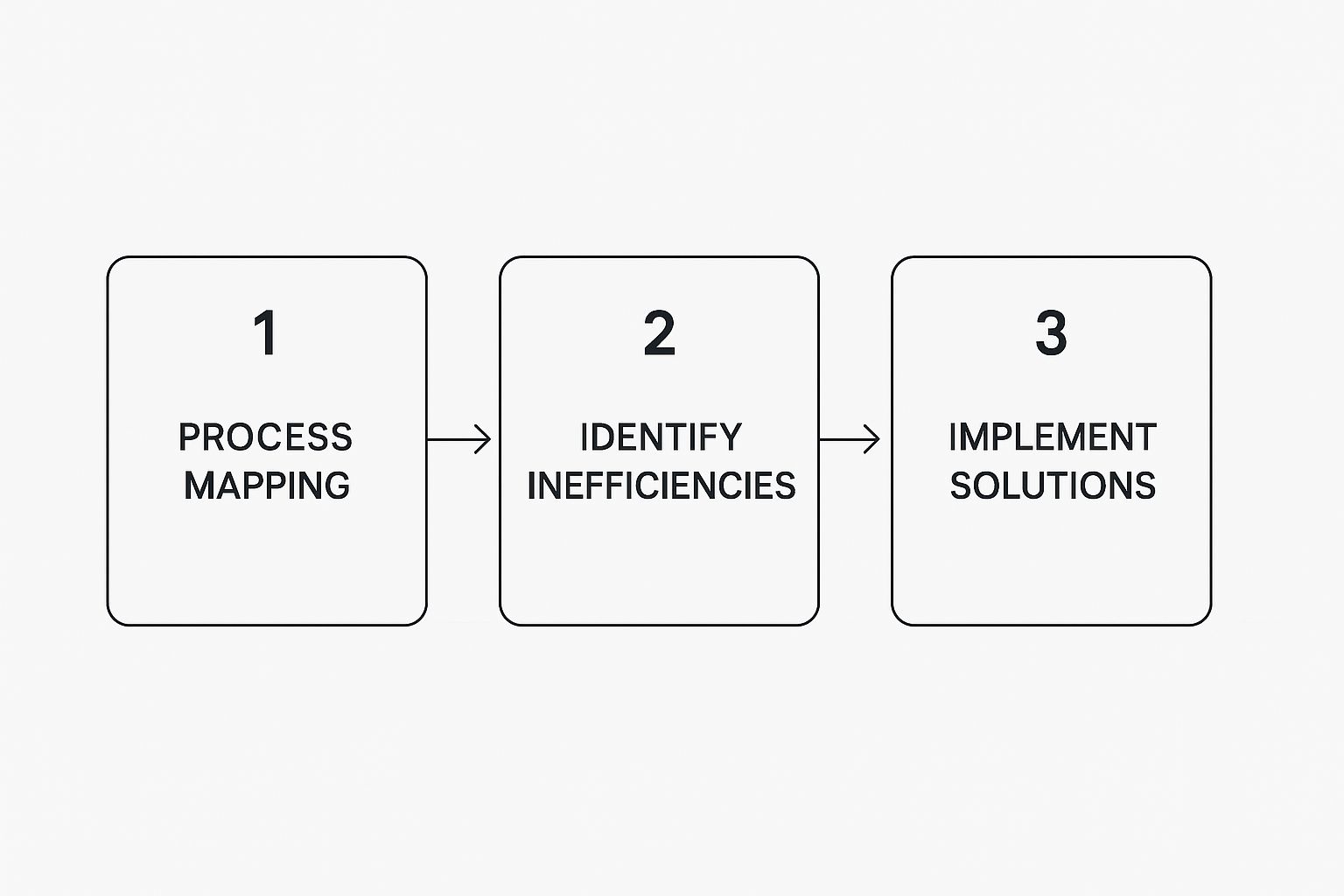
If your business still runs on spreadsheets, email chains, and copy-paste gymnastics — you’re not efficient, you’re surviving. And survival mode kills growth.
What starts as a simple way to “get things done” quickly balloons into a mess of friction. Teams work in silos. Hours vanish on repetitive tasks. Projects stall waiting for an approval no one seems to own.
If you’re a COO, CTO, or Head of Ops, you see the symptoms every day. This drag bleeds money, burns out your best people, and leaves customers hanging. The problem isn’t your team; it’s the process.
This is where business process reengineering comes in. Forget the buzzword. It’s about untangling the knots and getting your business flowing again.

Business process reengineering (BPR) isn’t about polishing the old way. It’s about asking:
👉 “If we were starting from scratch today, how would we design this to be as lean, fast, and customer-focused as possible?”
It’s a fundamental redesign, not a patch job. The shift is simple but powerful:
That mindset breaks silos and aligns everyone around outcomes.
Technology is the enabler, not the hero. Modern tools like monday.com for project clarity or Intercom for customer communication are powerful, but they only work if they serve a smart, streamlined process. Plugging a new tool into a broken workflow just helps you make the same mistakes faster.
This strategic rethink is gaining serious momentum. The global BPR market is on track to hit USD 10 billion by 2032. For dynamic markets like Switzerland, it's becoming essential for staying competitive. You can dig into the data on BPR market growth here.

We’ve seen BPR projects win big — and fail spectacularly. The trap? Getting lost in theory.
At Noliam, we cut through the noise. Our playbook is born from real projects, not textbooks:
Theory is easy. Execution is what matters. Here’s the hands-on approach we use:

Talk to the people in the trenches. Where does work stall? Which approvals drag forever? What manual entry drives them mad? Fix the pain points with the biggest impact.
Silos kill flow. Don’t ask “How can Finance go faster?” — ask “How do we cut order-to-cash from three weeks to three days?” Everyone works toward the same outcome.
Forget “one platform to rule them all.” They’re rigid, slow, and risky. Pick best-in-class tools (monday.com, Intercom, etc.) and connect them seamlessly.
Not everything needs automation. Target the repetitive, low-value tasks — like copy-pasting data across systems. That’s where smart automation frees people up for real work.
Forget the “big bang” launch. Pilot, adjust, scale. Agile rollouts reduce risk, build trust, and ensure the system works in the real world.
BPR isn’t about fancy frameworks. It’s about flow — making work move smoothly, without the stops and starts that kill productivity and morale.
When systems are built for flow:
It’s not about chasing the “perfect system.” It’s about smart, tangible changes that move your business forward now.

4–8 weeks per sprint. Results fast. Momentum built.
Yes. Agile businesses often see the biggest gains because they can move faster.
Automating a broken process. Fix the workflow first, then add tech.
No. It’s a series of focused projects. The best companies build a culture of continuous improvement.
At Noliam, we help ambitious teams turn operational complexity into a competitive edge. We design modular, human-first systems that make your business flow. If your business feels stuck in glue, it’s time to reengineer: